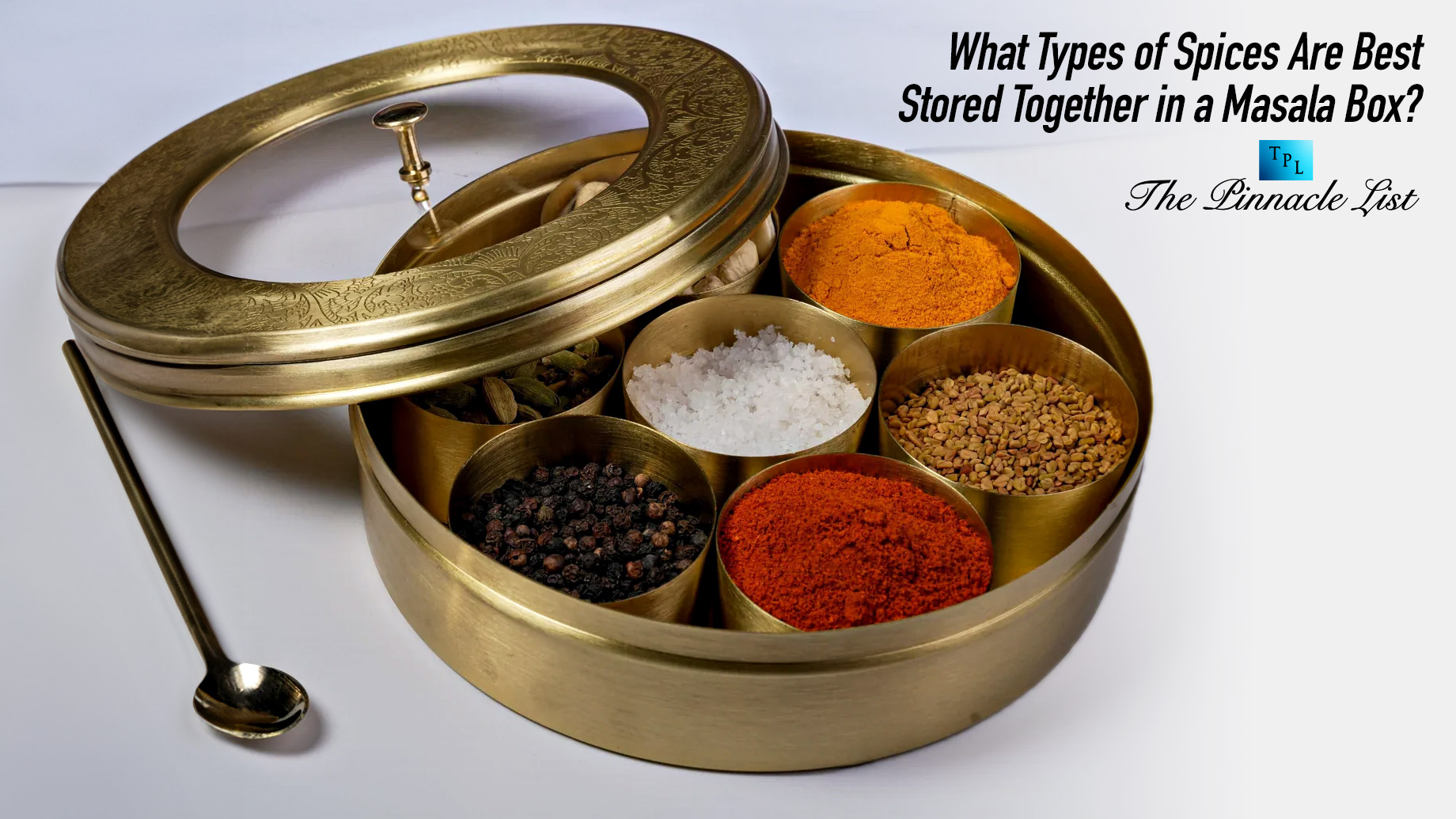
The traditional Indian spice box, known as a masala dabba, is a culinary essential for storing and organizing spices. This circular or square container typically houses seven smaller compartments, each holding a different spice. A well-organized masala box contains complementary spices that are frequently used together in Indian cooking.
Commonly stored spices in a masala dabba include turmeric, cumin seeds, mustard seeds, coriander powder, and red chili powder. These core spices form the foundation of many Indian dishes and work harmoniously when combined. Some cooks also include garam masala, a versatile spice blend, and salt in their Masala box for spices; organizing spices in masala dabba not only keeps them fresh but also streamlines the cooking process. By grouping frequently used spices together, home cooks can easily access the flavors they need without rummaging through multiple containers. This efficient system allows for quick and convenient seasoning during meal preparation.
Key Takeaways
- Masala dabbas typically contain 7 compartments for storing complementary spices
- Common spices stored include turmeric, cumin, mustard seeds, and coriander powder
- Organizing spices in a masala dabba enhances cooking efficiency and convenience
Fundamentals of Spice Storage in Indian Cooking
The masala dabba serves as the cornerstone of Indian spice storage, offering a practical and efficient way to organize essential spices. This traditional system helps preserve flavors and streamlines the cooking process.
Importance of Masala Dabba
A masala dabba is a circular stainless steel or brass container with smaller compartments for individual spices. It keeps spices fresh and easily accessible during cooking. The dabba protects spices from light and moisture, extending their shelf life.
Many Indian families pass down masala dabbas as heirlooms, emphasizing their cultural significance. The spice box allows cooks to quickly access multiple spices without opening separate jars. This efficiency is crucial in Indian cuisine, where multiple spices are often used in a single dish.
Selecting the Right Spices for Your Masala Dabba
Choose spices based on frequency of use in your cooking. Common choices include:
- Turmeric
- Cumin seeds
- Coriander powder
- Garam masala
- Cardamom pods
- Mustard seeds
- Chili powder
Include whole spices like cinnamon sticks and cloves for versatility. Hing (asafoetida) is often stored in a separate container due to its strong aroma.
Consider your cooking style and regional preferences when selecting spices. A well-stocked masala dabba reflects personal taste and culinary traditions.
Understanding Spice Combinations
Spice combinations form the backbone of Indian cooking. Certain spices complement each other and are frequently used together. For example:
- Cumin and coriander
- Cardamom and cinnamon
- Mustard seeds and curry leaves
Garam masala, a blend of warming spices, is often added at the end of cooking. Chaat masala provides a tangy flavor profile for snacks and street foods.
Experimenting with spice combinations encourages culinary creativity. Start with classic pairings and adjust to suit your taste preferences. A well-organized masala dabba facilitates this exploration, allowing cooks to easily mix and match flavors.
Effective Organization of a Masala Box
A well-organized masala box enhances cooking efficiency and flavor combinations. Proper arrangement ensures spices remain fresh and readily accessible for creating delicious dishes.
Categorizing Spices by Usage
Group spices based on their frequency of use in cooking. Place commonly used spices like turmeric powder, red chili powder, and coriander powder in easily accessible compartments. Reserve separate sections for spices used in tadka or tempering, such as cumin seeds and mustard seeds.
Store specialty spices like kasuri methi and asafoetida powder in smaller compartments. This arrangement allows quick access to essential spices while keeping less frequently used ones within reach.
Consider dedicating a section to spice blends specific to North Indian dishes. This strategy streamlines the cooking process for regional specialties.
Pairing Spices for Synergistic Flavors
Arrange spices that complement each other in adjacent compartments. Place cumin seeds near coriander powder, as they’re often used together in dal tadka and other dishes.
Group warming spices like cinnamon and cardamom. Position cooling spices such as fennel seeds nearby for balance. This pairing approach facilitates the creation of harmonious flavor profiles.
Consider the medicinal properties of spices when organizing. Place turmeric powder near black pepper to enhance its bioavailability and health benefits.
Preserving Spice Quality and Potency
Choose a stainless steel box for your masala dabba to protect spices from light and moisture. Ensure each compartment has a tight-fitting lid to maintain freshness.
Store whole spices separately from ground spices to prevent flavor transfer and maintain individual potency. Keep dried herbs in a cool, dark place within the box to preserve their aromatic qualities.
Regularly check and replace spices to maintain optimal flavor. Label each compartment with the spice name and date of purchase. This practice helps track freshness and ensures the use of high-quality ingredients in your cooking.
Conclusion
A well-organized masala dabba enhances the Indian cooking experience. Grouping complementary spices together allows for efficient access and maintains freshness. Common pairings include cumin-coriander, turmeric-chili powder, and cardamom-cinnamon-cloves.
Ultimately, the ideal spice combinations depend on individual cooking preferences and frequency of use. Experimenting with different arrangements helps identify the most practical setup for one’s kitchen. A thoughtfully arranged masala box becomes an invaluable tool for creating flavorful dishes.